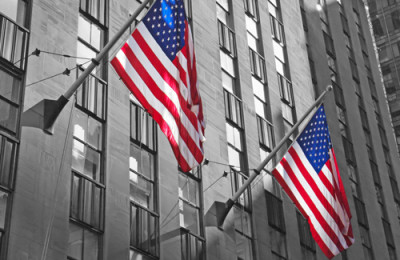
David Worsfold
Barring an almighty bust-up at the Republication Convention, Trump v Clinton will be the battleground in the US Presidential election this November. Now people are starting to ask some serious questions about the substance behind Donald Trump’s economic policies. What they are finding makes many very nervous – something that will increasingly feed through into the US markets the nearer we get to the election. The closer the opinion polls get, the greater the volatility we can expect.
But what are those policies? Much of the detail – such as it is – has been hidden behind the headline-grabbing rhetoric of Trump’s primary campaign. But we do know enough about the policies that support his three big economic themes of tax, trade and immigration to see where problems might lie and where the biggest impacts will be.
Cut and simplify taxes and “we will have a dynamic economy again”, says Trump. There are specific promises to bring the top rate of income tax down from 40% to 25%, slashing a quarter off Federal spending to pay for it. On corporate taxes, the promise is similar: bring the top rate down from 35% to 15%, although Trump offsets that with a promise to reduce various tax credits and chase untaxed revenues stashed abroad, a plan not dissimilar to that now being formulated by European governments. The impact on the corporate tax take could be roughly neutral, say experts.
Overall, the proposals would potentially cost $11.98 trillion over a decade, according to the Tax Foundation, a non-partisan research group. On the positive side, it estimates that this could lead to an 11% growth in GDP, 6.5% higher wages (although wealth inequality would also widen) and up to 5.3 million new jobs. But even with this growth, Federal government revenues would dip by $10 trillion over the decade, meaning massive cuts in spending or a huge leap in the deficit.
It is likely to be a combination of both.
Trump has promised to protect two of the biggest areas – social security and Medicare – so in practice, much as David Cameron and George Osborne found on these shores, he is unlikely to be able to achieve the 25% cut in spending needed, although he has said he would stop Federal spending on education, shut down the Environmental Protection Agency and repeal the Dodd-Frank Act as well as scrap all the regulatory bodies set up in its wake. Investing in firms that are dependent on Federal government contracts could start to look a very poor bet.
Alongside those cuts, the growing deficit will need to be financed. This could spook the markets with yields on US government stock forced up. If this prospect moves closer to reality during the campaign, it probably makes it less likely that the Federal Reserve will do anything dramatic on interest rates. However, it may step in quickly after the election if Trump is heading for the White House.
His tough stance on trade, especially with China and the protection of US labour, could see high tariffs imposed if he cannot bring China to the bargaining table to discuss his other concerns about perceived currency manipulation and theft of intellectual property. This could send shockwaves reverberating through emerging economies as a new trade war widens its scope just when institutional money from Europe and the United States is starting to move again in their direction in search of higher yields.
The greatest economic uncertainty, however, comes from Trump’s isolationist foreign policy.
There is the much-discussed pledge to expel around 11 million undocumented immigrants living in the US. Trump’s arguments echo those put forward by Brexit campaigners in the UK: “The influx of foreign workers holds down salaries, keeps unemployment high and makes it difficult for poor and working-class Americans, including immigrants themselves and their children, to earn a middle class wage”.
The right-leaning American Action Forum has estimated it would cost between US$400bn and US$600bn to secure the border with Mexico (a key Trump policy plank) and deport the 11.2 million undocumented immigrants. The costs to the American economy would be much greater, says the Forum. Immigrants are projected to provide most of the growth in the American labour force over the next 40 years. The loss of so many workers would depress the gross domestic product by $1.2 trillion.
Trump’s hostility towards Muslims is likely to have a major impact too, although no economists yet seem brave enough to try and quantify it yet. With entry into the US barred to Muslims, it is hard to see how US business relationships with firms in the Middle East will progress, or even survive. And that is before we examine the geopolitical ramifications of such a move.
Trump spells volatility and uncertainty for the financial markets whichever way you look. But investors shouldn’t let that deflect them from examining the potential – and much more likely – triumph of Hilary Clinton in November. Her forceful comments about the need to regulate big pharma and the bio tech sector have already caused wobbles on Wall Street. As the Democrats try to strengthen their appeal to middle America to see off the threat from Trump, her rhetoric about the need to align big business and the financial markets more closely with the needs of ordinary Americans will get tougher. There are echoes of Trump’s protectionist stance starting to emerge there as well.
Trump has changed American politics – and economics – already. He is setting the agenda. Expect more of the same over the next few months.
